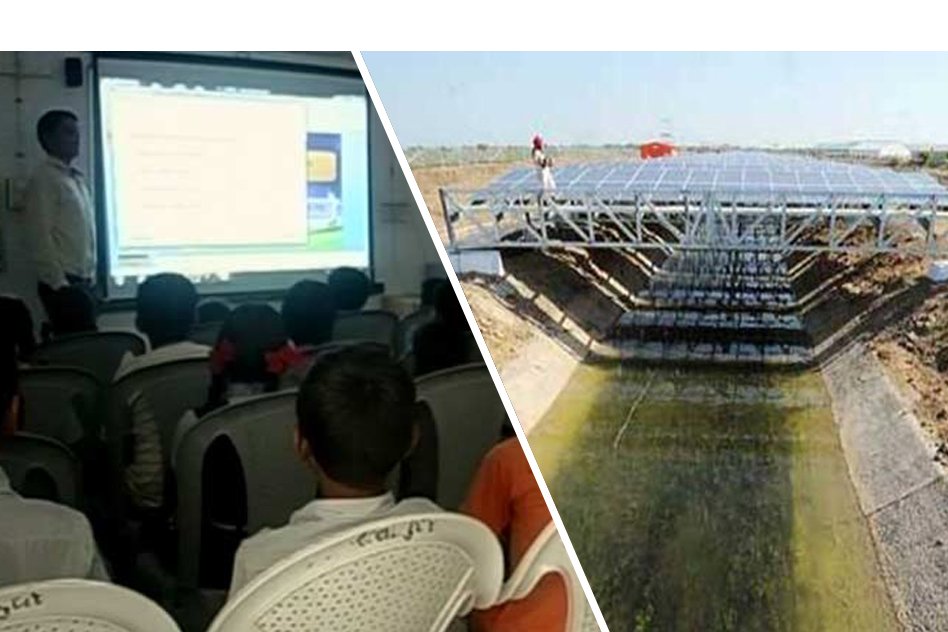This Smart Village In Gujarat Went From Having No Electricity To Wifi, RO Water Purification And Solar-Power Streetlamps
2 Sep 2016 6:39 AM GMT
The image that we generally have in mind of an Indian village constitutes rugged roads, frequent power cuts, improperly working schools and hand pumps. However, if one were to visit Punsari village in Gujarat, it is a completely different story.
Located in Sabarkantha district and some 90km from Ahmedabad in Gujarat state, this village has some of the facilities quite uncharacteristic of a typical Indian village.
A Modern Village
The village has concrete roads, a RO plant for water purification, solar-powered streetlights, a primary health centre, banking facility, a toilet in every home and a proper sanitation and drainage system, which is completely underground.
Adding on to the list the village has air-conditioned primary schools equipped with CCTV cameras and smart education technology, speakers at key junctions, Wi-Fi connectivity and an independent Panchayat-run bus service.
The credit for this astonishing transformation of Punsari goes to their Sarpanch, Himanshu Patel.
Mr.Patel, first elected Sarpanch in 2006 at the age of 23, is a graduate and a tech-savvy man. He leads an 11-member committee which runs the village affairs. Of these, five are women.
How it started?
Six years ago, this village had no sewerage connection, no streetlights and not even concrete roads.
“When I took over, there was nothing in the village,” says the young sarpanch.
“The panchayat was dependent on grants from various state and central government schemes. We also did not get NRI finance like some villages do that have a significant diaspora overseas. My team and I decided we must make sensible use of state government funds and earn revenue from the land at our disposal,” he says.
Mr Patel says they have harnessed state and national level developmental schemes to create infrastructure in the village which rivals the best in any part of the country. The total expenditure is around 16 crores over a period of eight years.
The village panchayat had a capital of Rs 25,000 seven years ago. Today, the deposits have soared to Rs 45 lakh
Awards and Recognition
For his efforts, Himanshu Narendrabhai Patel was awarded with the best Gram Sabha award at the third National Panchayati Raj Day held at New Delhi. In November 2011, he received the best Gram Panchayat award in Gujarat from Chief Minister Narendra Modi.
The village’s model was also appreciated by delegates from Nairobi and they were keen to replicate this in Kenyan villages.
Advanced Facilities in the village
“We have installed 140 waterproof speakers at strategic locations in the village. The speakers not only broadcast bhajans, shlokas and Gandhian philosophy, but also keep people informed about the new schemes, government regulations and projects that they can avail of,” he says.
The village is also increasingly moving towards digitalisation, says Patel. “When we made Punsari a Wi-Fi village, only a few youngsters used the Internet. Now a sizeable number uses computers and smart phones. A lot of villagers have also started applying for recruitment and various schemes online,” he says.
There are two primary schools in Punsari and the school drop-out rate is zero. To keep a check on quality and ensure regularity of classes, CCTVs have also been installed in all schools. The classrooms are well-equipped and also have education technology aids such as projectors.
While many in the cities lack an insurance cover, every person in the village has a cover of Rs 1 lakh and a medi-claim policy of Rs 25,000. The village panchayat pays an annual premium of Rs 25 lakh against the insurance. The Reverse Osmosis plant in the village supplies 20-litre cans to houses for a token amount of Rs 4.
With all these advancements, if the idea was to stop migration out of the village, it has been a partial success. Mr Patel says 15-20 families have returned to the village from the cities like Mumbai in recent years. He has even proposed Government of Gujarat to set up GIDC nearby so that youngsters don’t need to migrate for job.
Move towards Replication of the Model
In June 2014, the additional secretary of the Rural Development ministry of the Union government visited the village to study this model so that it can be replicated across 640 districts in India.
Patel said the visit was prompted by the PMO and adds that more than 300 officials have made similar visits from all over India to recreate similar villages.
“The model can be easily replicated in India. It only takes smart planning, dedicated people participation and a non-corrupt system,” says Patel.
 All section
All section














